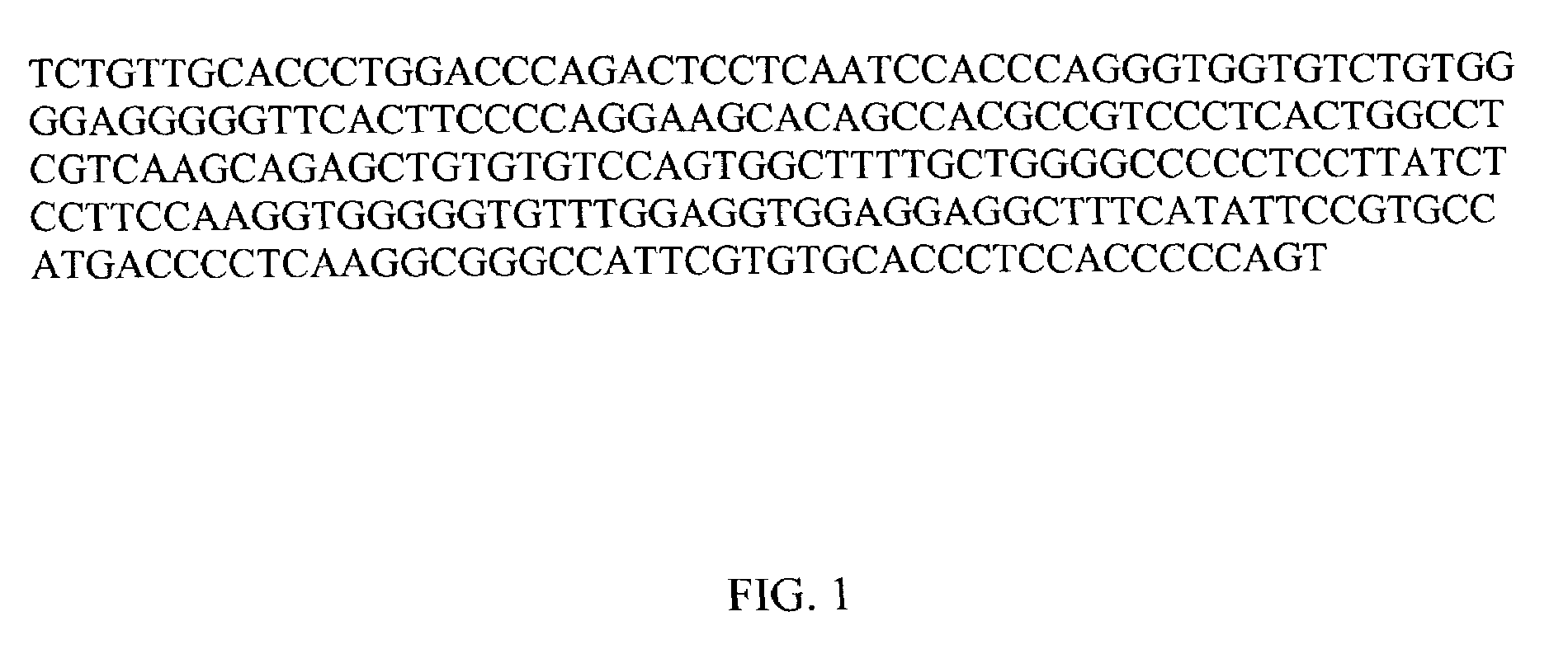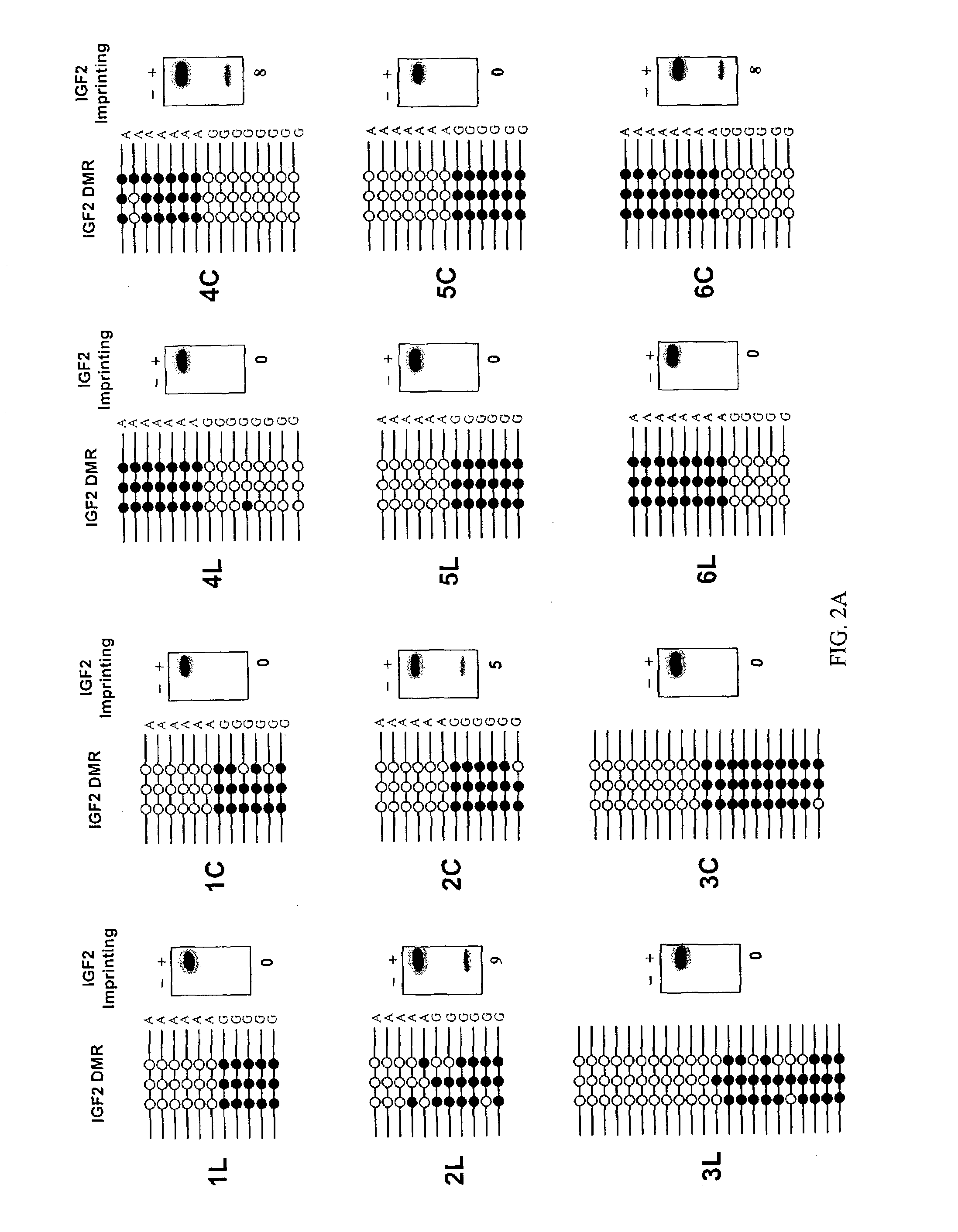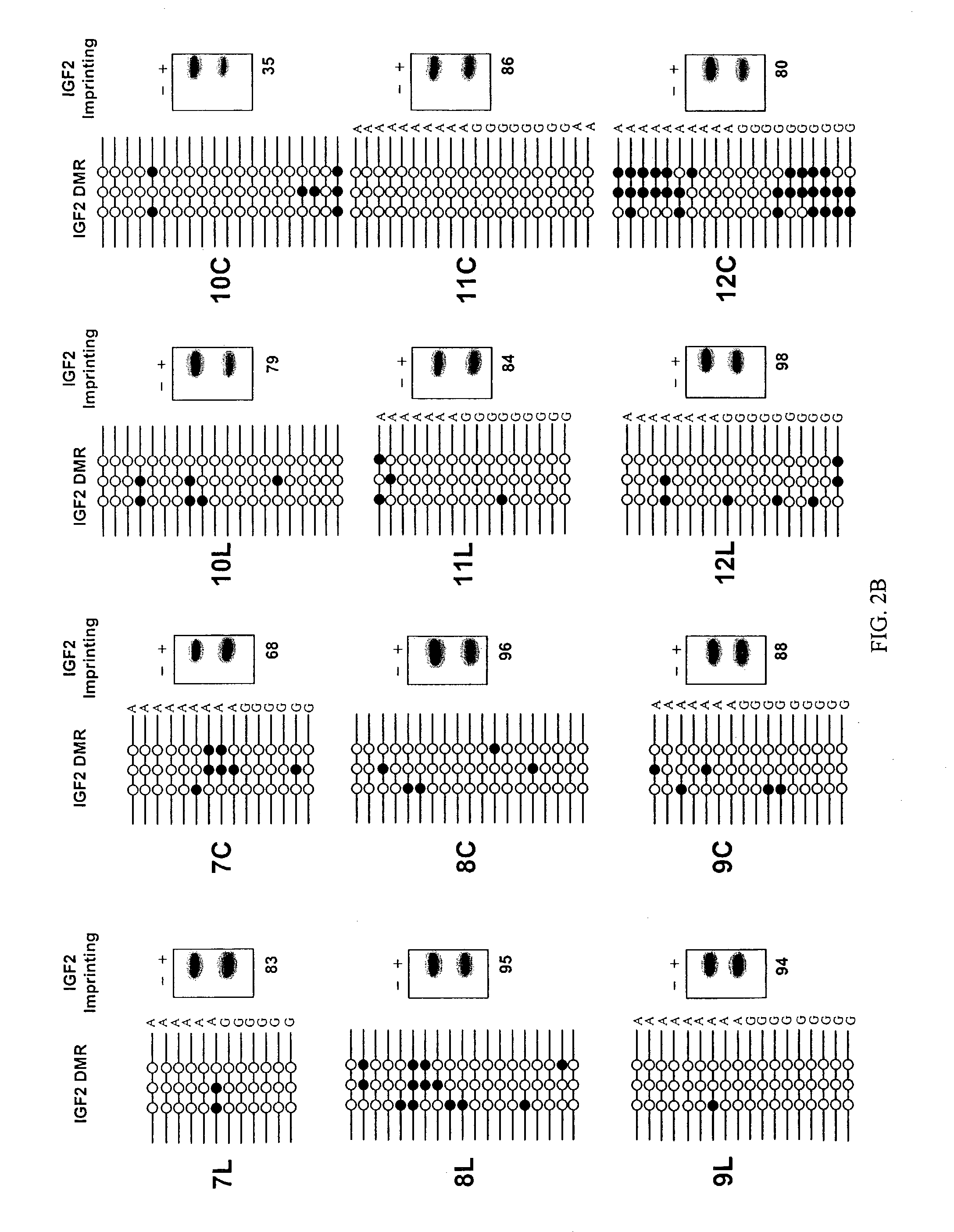Methods for identifying cancer risk
a cancer risk and method technology, applied in the field of methods for detecting the presence or can solve the problems of loss of imprinting and increased risk of developing cancer, and achieve the effects of increasing the risk, increasing the risk of developing cancer, and prognosing the cancer risk of a subj
- Summary
- Abstract
- Description
- Claims
- Application Information
AI Technical Summary
Benefits of technology
Problems solved by technology
Method used
Image
Examples
example 1
Association of Loss of Imprinting and Colorectal Neoplasia
[0117]This example illustrates that LOI in normal tissue is associated with either a family history or personal history of colorectal neoplasia.
Materials & Methods
[0118]Study Population. Subjects were identified and recruited in the Johns Hopkins Outpatient Endoscopy Clinic and the Johns Hopkins Greenspring Endoscopy Unit. Eligible subject were those individuals who were having a colonoscopy for any medical indication, who were 18 years of age or older and who had physician approval. Written informed consent was obtained from all subjects. Clinical, demographic, family history and exposure information were obtained with the use of validated questionnaires. The protocol was approved by the Johns Hopkins Joint Committee on Clinical Investigation.
[0119]Collection of Research Materials. Colon tissues were collected from patients who underwent a colonoscopy. Ninety-seven percent of patients agreed to participate. Colonoscopic exam...
PUM
| Property | Measurement | Unit |
|---|---|---|
| Fraction | aaaaa | aaaaa |
| Fraction | aaaaa | aaaaa |
| Fraction | aaaaa | aaaaa |
Abstract
Description
Claims
Application Information
 Login to View More
Login to View More - R&D
- Intellectual Property
- Life Sciences
- Materials
- Tech Scout
- Unparalleled Data Quality
- Higher Quality Content
- 60% Fewer Hallucinations
Browse by: Latest US Patents, China's latest patents, Technical Efficacy Thesaurus, Application Domain, Technology Topic, Popular Technical Reports.
© 2025 PatSnap. All rights reserved.Legal|Privacy policy|Modern Slavery Act Transparency Statement|Sitemap|About US| Contact US: help@patsnap.com



